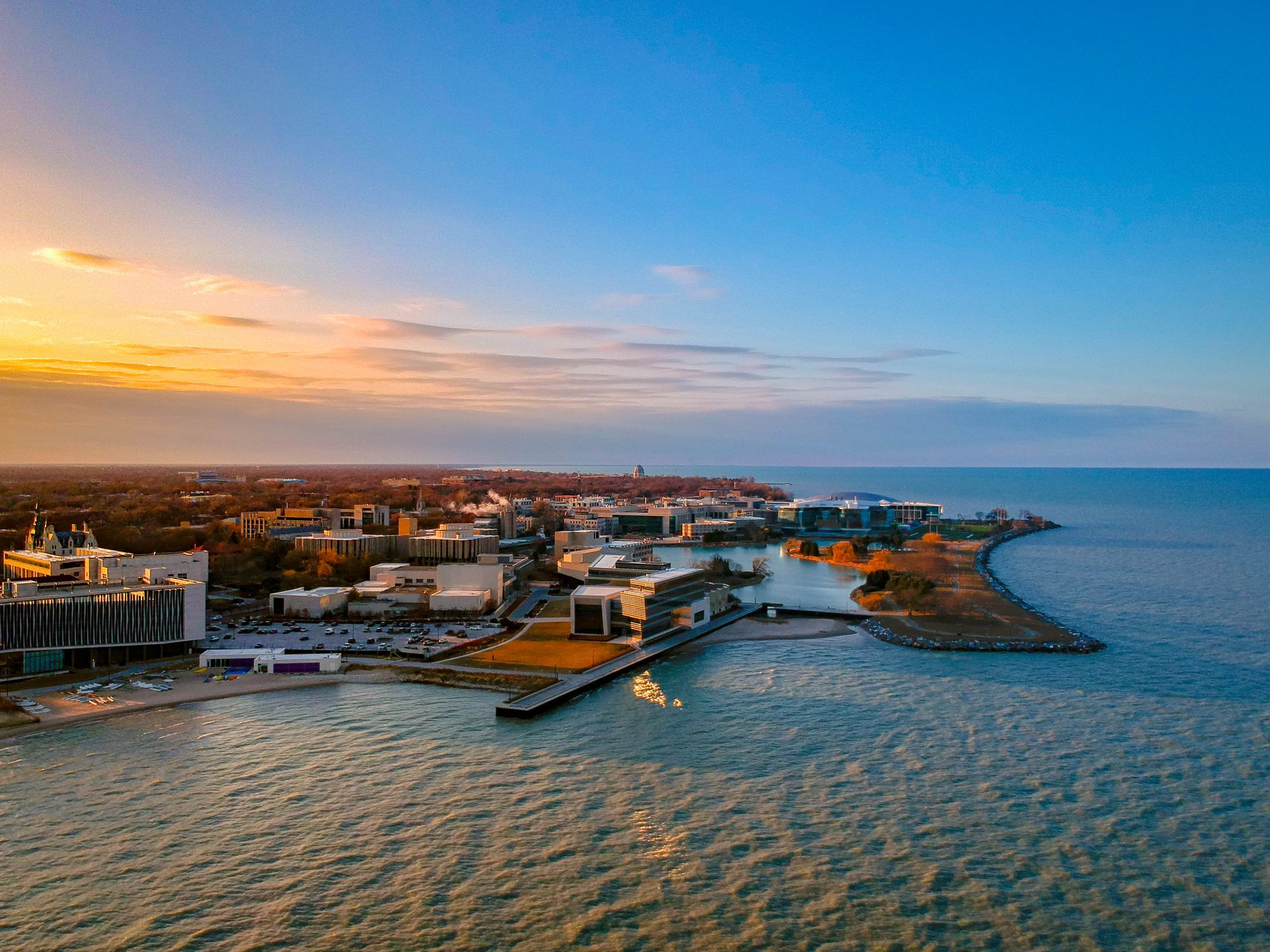The Lakefill's environmental impact reaches beyond the shore.

The Lakefill: Northwestern’s poster child and the campus’ gateway to Lake Michigan. A well-known and loved part of campus, it constitutes almost half of the campus and is home to Northwestern landmarks like the Kellogg Global Hub and the Ryan Center for the Musical Arts.
But the Lakefill offers more than just a photo-opp; it is one of Northwestern’s most remarkable natural areas. Completely man-made, it is a mound of sand surrounded by a limestone wall. The construction of such an artificial structure has had both expected and surprising environmental effects on the Evanston campus and beyond its shores.
Construction of the Lakefill began in 1962, after the University’s Board of Trustees decided that it needed to build more infrastructure to expand. To avoid displacement of Evanston locals and save money, the University decided to extend into Lake Michigan and add 74 acres of land to its then 83-acre campus.
That same year, a fight raged between the State of Indiana and Senator Paul Douglas of Illinois, a fervent conservationist. Indiana wanted to build a harbor in the Indiana Dunes, while Douglas wanted to preserve parts as a national park, going so far as to say, “The Indiana Dunes are to the Midwest what the Grand Canyon is to Arizona...once lost, their loss would be irrevocable.”
Enter Northwestern, which had signed a contract with the Missouri Valley Dredging Company to obtain the approximately 2 million cubic yards of sand it needed for the Lakefill. What the University didn’t know is that the sand was slated to be taken from the disputed Indiana Dunes. Douglas, furious at the proposal, accused Northwestern of committing “a brutal, anti-social act.”
According to then University president J. Roscoe Miller, Northwestern was unaware that the company it contracted to build the Lakefill partnered with Bethlehem Steel to obtain sand from the dune property. Northwestern appealed to Bethlehem Steel following Douglas’s complaint, but the company did not budge.
Technically, Northwestern did not source sand for the Lakefill from what would become the Indiana Dunes National Park, as that portion of the land was allocated to the state’s harbor.
According to Rosemary Bush, an assistant professor of earth and planetary sciences, the negative environmental impact was not made by the creation of the Lakefill, but the destruction of the dunes.
Bush says the extension into Lake Michigan did not significantly harm the lake’s ecology. “You lost 74 acres of Lake Michigan, sort of muddy lake bottom, but Lake Michigan, frankly, has bigger problems.” Bush says losing 74 acres of the lake was a small change when considering the opportunities the Lakefill grants for people to get outside on campus. Still, she says, the University could work on adding more native plant species to the Lakefill.
Despite its rocky beginnings, the Lakefill has benefited the University environmentally. One of its main environmental assets is the lagoon nestled next to Norris, which acts as a cooling pond for the heated waste water released from the Central Utility Plant beside it. The lagoon minimizes the thermal pollution of the plant according to Greg Kozak, Northwestern’s director of sustainability.
“In the absence of [the lagoon], you could have very large, concrete cooling towers that consume even more energy to cool that water,” Kozak says.
The water used by the plant, which is responsible for heating hundreds of buildings on the Evanston campus, is drawn from Lake Michigan. Kozak believes the waste water discharged into the lagoon is likely not contaminated with anything besides heat. “We do have a permit with the [Environmental Protection Agency] that allows us to do this, and we have to meet certain thresholds and testing parameters,” he says. “But I wouldn’t say there’s contamination in the water. That’s not something the University would do.”
Also in the lagoon is a portion of water that doesn’t freeze over in the winter. This area acts as a popular stopping point for migratory birds in the winter as it is one of the few places they can access liquid water.
“We’re in the middle of a big flyway for migrating birds, being in the middle of the continent, so having that lagoon as a stopping point is actually pretty important for some of them,” Bush says. “They wouldn’t necessarily stop in the middle of Chicago if they didn’t have to. But when they have to, it makes for some really fabulous birding in the middle of the winter.”